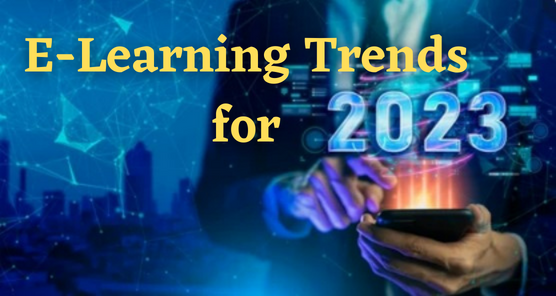How can e-learning help your business as it transforms and grows over the coming 12 months and beyond? How will new technologies impact and improve the delivery of training in your organisation? Many of the answers to these questions are in the following e-learning trends for 2023.
Enter the Metaverse
Virtual reality (VR) and augmented reality (AR) are already used in online training, including for health and safety topics, in the healthcare sector, and in industrial environments. The e-learning industry is now taking this a step further with the introduction of the metaverse to online training.
In fact, VR and AR technologies are not even required for e-learning in the metaverse to be effective. Most platforms that fall under the metaverse umbrella, such as the video game Roblox, are most commonly played on gaming consoles and computers without VR or AR. The reality of the metaverse is that it is highly flexible and can be implemented in many different ways.
The benefits of the metaverse are the main reason why organisations in a range of sectors are exploring ways of introducing this technology to their training strategy. Those benefits include making the learning experience more immersive and interactive, as well as eliminating risks.
Boosting Your ESG Strategy
Environmental, Social, and Governance (ESG) are important considerations for companies, and they will continue to be a priority in 2023 in beyond. E-learning can play an important role in the implementation of ESG initiatives, as well as helping your organisation achieve its ESG goals.
For example, you can use e-learning content to communicate within the organisation, increasing awareness of your ESG strategy. E-learning training courses can also help encourage personal responsibility and improve participation in the company’s ESG efforts.
The Importance of Continuous Learning
The modern workplace in the UAE and Saudi Arabia is one where new innovations are rapidly developed and there is a continuous push for improved performance, productivity, and efficiency. As a result, it is essential that employees continually improve existing skills and develop new ones.
This fact has been apparent for several years now, but it is going to come into even sharper focus in 2023 and the subsequent years.
Just look at digital transformation as an example. As a result of digital transformation strategies, workflows and processes are changing across all parts of a modern business. This is changing the tasks that employees would have traditionally performed, with many repetitive and/or time-consuming tasks being automated by technology. Employees need new skills to adapt to these new realities.
On-Demand Learning
One of the best strategies to enable continuous learning in your organisation is to make training courses available on demand. Therefore, the creation of on-demand learning libraries is anticipated to be an area of focus for many companies over the coming year.
On-demand training is relevant for a wide range of topic areas, including compliance topics, upskilling topics, and soft skills training.
Personalised Learning Experiences
Employee experience is a key consideration for companies, particularly in sectors where staff retention is a high priority. The aim is to ensure employees feel connected and engaged with the company, as well as feeling valued in their role.
E-learning can help with these efforts, especially if you make the training as personalised as possible for each individual learner. This includes personalisation in terms of the content, although personalised learning paths are even more important.
When an employee is on a personalised learning path, they can spend more time on the areas where they need to improve their knowledge or skills, while skipping sections or modules where they already feel comfortable.
Training a Hybrid Workforce
With flexible work arrangements now the norm in many organisations, training strategies need to be continuously reviewed and adapted. One of the challenges to overcome is ensuring employees feel connected and part of the team. E-learning has its place, but it can be augmented with blended learning. Blended learning is where some parts of the course are taught via e-learning modules with other parts being instructor-led.
Wellbeing Training
An important theme for business leaders over the coming year and beyond is employee engagement. In other words, how to prevent employees from becoming disenchanted with your workplace and ending up as part of what has become known as the great resignation.
Focusing on wellbeing issues and topics is one way to improve employee engagement. It demonstrates you genuinely care about the employee beyond what they do for the company. Employee wellbeing is also important for the organisation as a happy and healthy employee will be more productive, creative, and enthusiastic.
E-learning should be an important part of your wellbeing initiatives, where you seek to enhance the skills of your employees in everything from financial wellness to work-life balance to mental health awareness.
Quality, Quality, Quality
Most of the people that will undertake your e-learning courses will be familiar with a wide range of technologies, from the latest blockbusting gaming titles to the most popular social media channels to slick and intelligent streaming services.
There is one thing all these technologies have in common – they are all exceptionally high quality. They have a polished appearance, they are easy and intuitive to use, and they deliver on user expectations in terms of functionality.
This expectation for quality translates to all types of technology, including technologies used in the workplace and, more specifically, e-learning content.
A Well-Established Training Strategy Set to Get Even Better
If there is one theme that runs through all the trends highlighted above it is the push for continuous improvement in e-learning, where you build on the successes of the past to take your overall training strategy to another level. This could be through the creation of a training catalogue of e-learning courses, for example, or by ensuring the quality of your content is up to the expectations of learners. This continuous push for improvement will help your business achieve its objectives.
